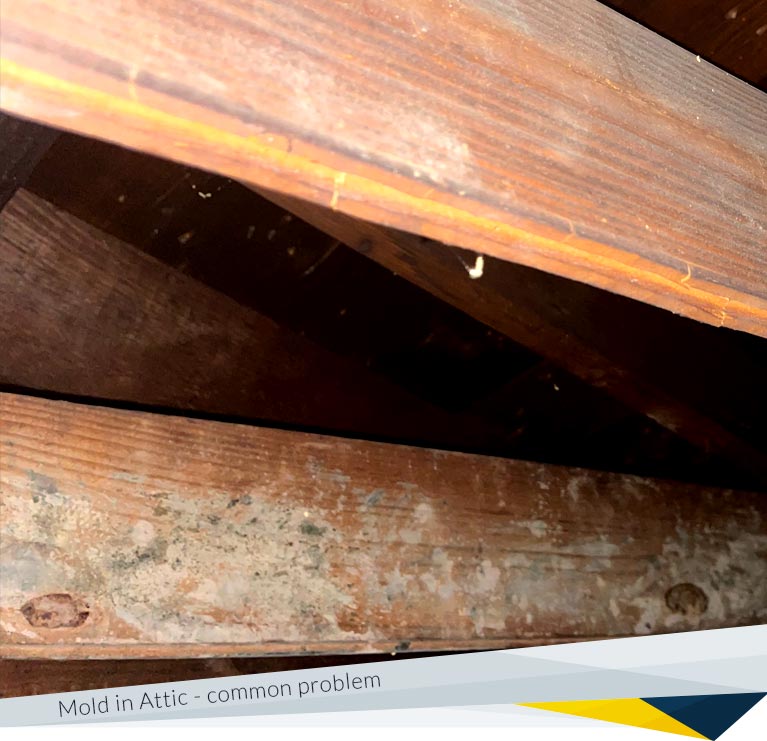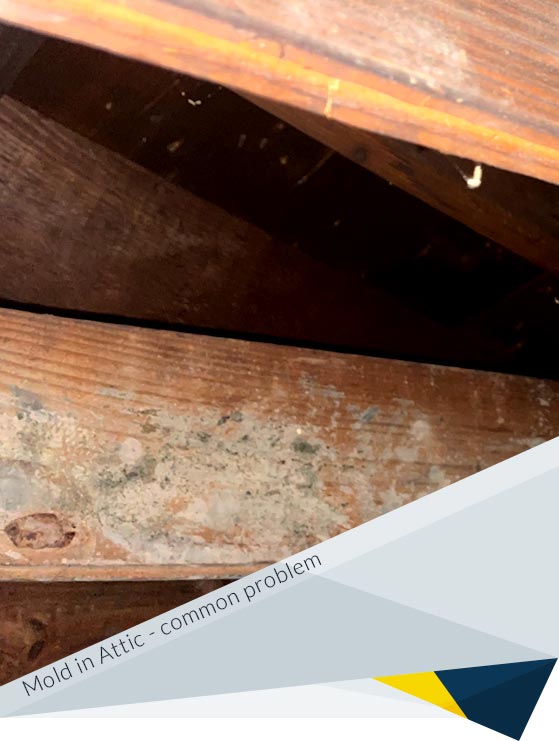
Finding mold in the attic can cause concern for any Baltimore, MD, homeowner. As a place in our homes that is not used often, attic mold can quickly get out of hand. Attics are dark and humid, making them the ideal place for mold growth to thrive.
While there are many different types of attic mold, some are quite common, while others can cause a health emergency. Any kind of mold in the attic can cause damage to the home as well. Learn more about why homeowners should care about attic mold and how to start the mold removal process.
The attic is the perfect place for mold to grow and thrive. Many homeowners use their attic to store items such as cardboard boxes, holiday decorations, or forgotten family heirlooms. Mold in the attic takes advantage of these items and uses them as food to grow.
Attics often contain moisture, either from a leak in the roofline or the humid environment, which is the first thing mold needs to survive. From there, mold uses cardboard boxes, drywall, and wood as food. An attic usually has all the necessary conditions for mold, making it the perfect place for mold growth to get out of hand.

The most common sign of mold growth is the visual coloring of its appearance. Mold often grows and spreads along walls, wet boxes, or woodwork and will discolor the item that it is on. The best way to spot attic mold is to use a flashlight and look at every nook and cranny of the space. Mold in the attic comes in many forms, from white and puffy growth to dark and flowery growth, so be aware that anything could be mold.
Another sign of mold in the attic is the smell. Some molds have a distinct smell to them that can be off-putting. Mildew is another good sign that attic mold may be present. If the attic smells musty or unpleasant, it is possible that mold growth could be lurking somewhere within.
Attics are located at the top of a home, which is the first barrier between the outside and living spaces. This top-level space is more susceptible to water damage, and even the smallest leak in the roofline could cause a significant mold problem below.
Another leading cause of attic mold is that such spaces aren't well-ventilated. The attic isn't usually a daily living space, so it is often forgotten regarding airflow and dehumidification. Attics become hot and stuffy without proper ventilation, creating a perfect environment for mold growth.
The CDC states that mold strains pose different health risks to those living within the home. Some people may be extra sensitive to mold spores and have mold allergy symptoms such as sneezing, coughs, or stuffy noses. Those with asthma may also experience more flare-ups with mold growth lurking above bedrooms and living spaces. Itchy or watery eyes are another common symptom of increased mold growth within any Baltimore, MD home.
As always, it is a good idea to talk to a doctor regarding symptoms of medical conditions. Our suggestions here do not replace medical advice, diagnosis, or treatment from a medical professional.
Once the attic mold is found, it is best to stop the mold growth as soon as possible. Removing contaminated items is the first step to mold treatment in the attic. Mixing hydrogen peroxide or vinegar with water can help alleviate small amounts of mold growth as well. In addition, consider installing a dehumidifier in the attic to reduce moisture in the air. The CDC recommends keeping the area at a 30%-50% humidity level. Fixing any leaks or areas where water enters the space is also vital in mold treatment.
While Baltimore, MD homeowners can clean and hope that the mold in the attic is gone, it is best not to attempt DIY methods since you could actually make the situation even worse. Calling a professional, like FDP Mold Remediation of Baltimore, is the best way to ensure the house is properly treated. Hiring an attic mold removal service brings peace of mind in knowing that the home will be mold-free and the job will be done using the best practices for attic mold prevention.
Whenever you notice attic mold, acting quickly to restore the home's well-being is essential. Contact FDP Mold Remediation today for professional mold removal in the attic space of your home.



